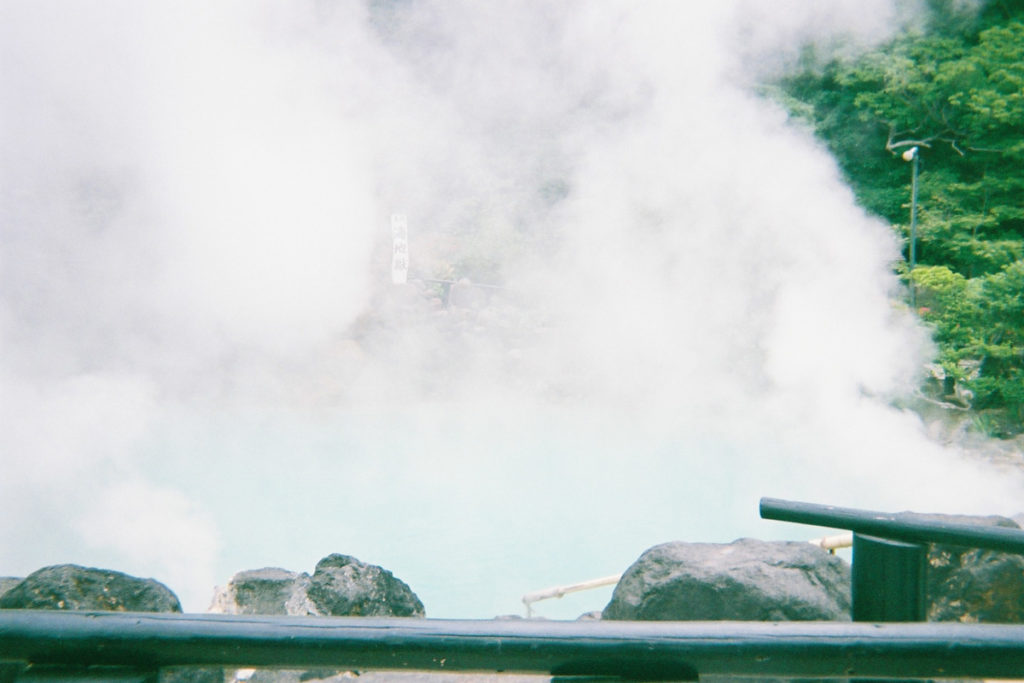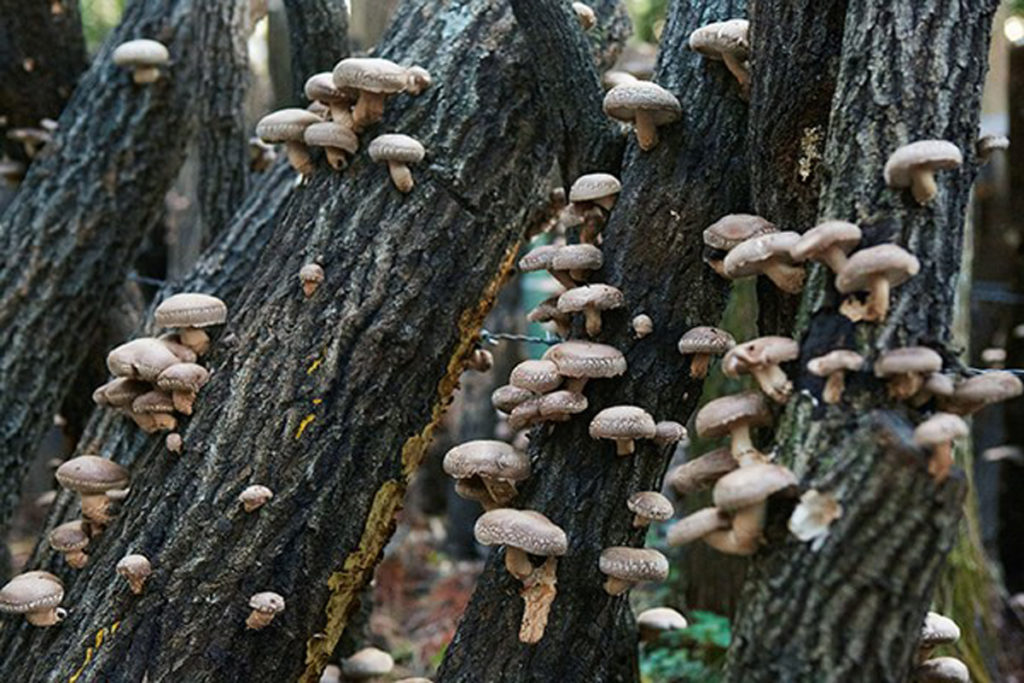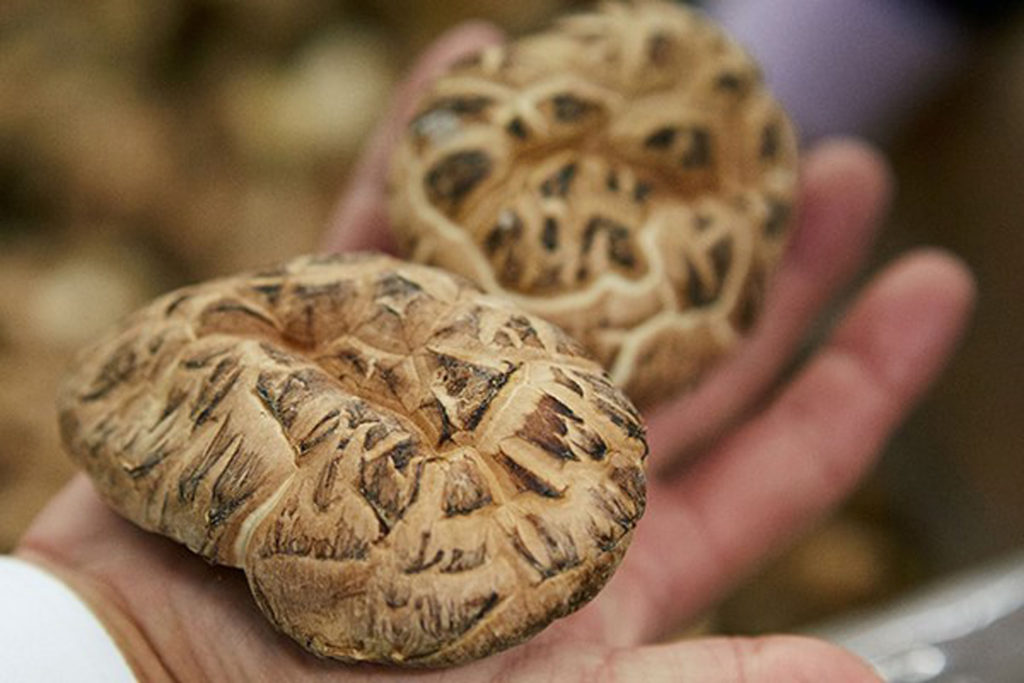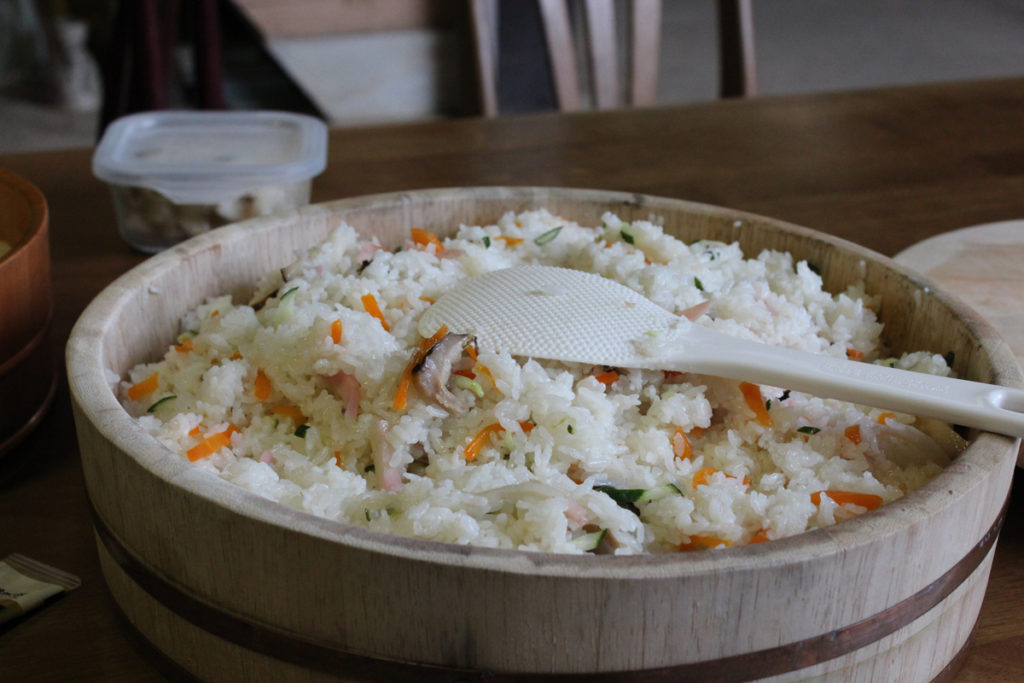Oita, known for having amazing onsen, nature and eggs cooked in hot steam, also has the perfect conditions for traditional shiitake growing. The area is 70% rainforests and the broad-leaved trees provide much-needed shade to the maturing shiitake.

There are two basic methods for shiitake cultivation today. Log cultivation is said to have been developed by a chance discovery in the 1600s in Oita. In between the late winter and early spring, shiitake farmers start the komauchi process—the specific term for inoculation by this method—by cutting small holes in cut oak stumps and filling them with shiitake mycelium seeds.
They are then placed carefully in a well-ventilated spot with little direct sunglight for around 18 months. In the fall of the following year, they are moved to hodaba in the forest and patiently left alone until harvest in the following spring and autumn. All up it takes two to two and half year and relies heavily on hard labour and Mother Nature.

The fungal bed method on the other hand is relatively well-controlled and relies on a nutrient source mixed with a wood-base material like sawdust to give life to the shiitake. No surprises, it’s the most popular method not only in Japan but abroad. The log cultivation produces wonderfully springy and flavour-packed mushrooms and are noticeably more complex than those grown otherwise. Luckily they are still able to be found in Oita, but due to an ageing workforce it’s unclear if this method will be passed down.
Mushrooms harvested from both methods are dried and shipped around Japan and the world. Oita accounts for about half of the domestic production.

Both fresh and dried shiitake mushrooms contain glutamic acid but the dried ones are preferred for use in stocks and dashi as they contain a magic substance called guanilic acid. When heated at a particular temperature, this acid interacts with the glutamates and helps to enhance the mushroom’s rich flavour. It’s also during the heating process that Lenthionine is produced, an acid that accounts for the wonderfully earthy, woody aroma you get when using shiitake dashi.
Shiitake dashi is probably the least common of the dashi types, but is perhaps the most versatile as it is suitable for more diets. It’s also a convenient byproduct of rehydrating shiitakes for use in other dishes. Shiitake dashi can be used in most dishes that call for fish-based dashi, or can be mixed with other dashi to create an even more complex broth.












